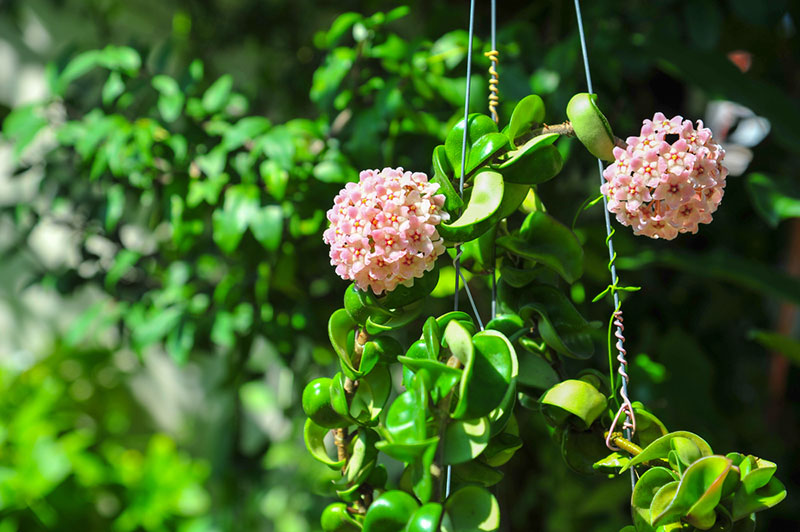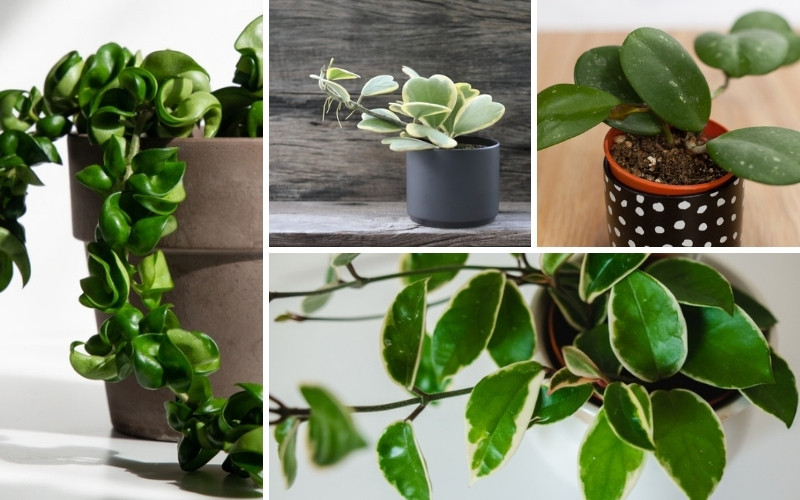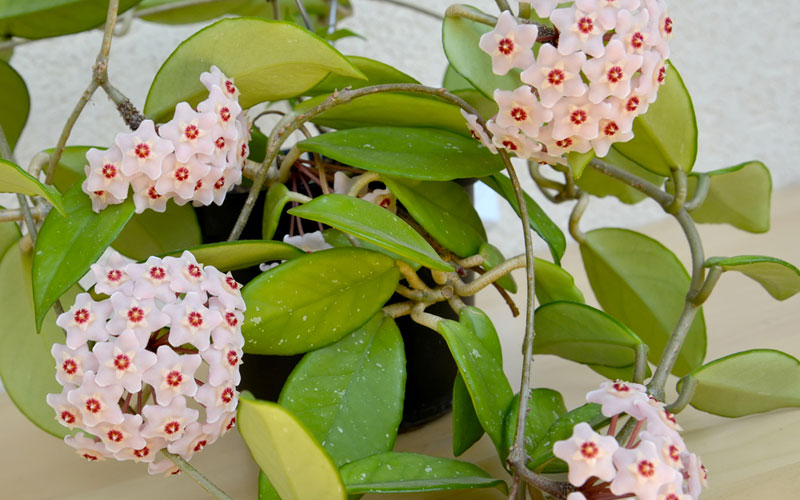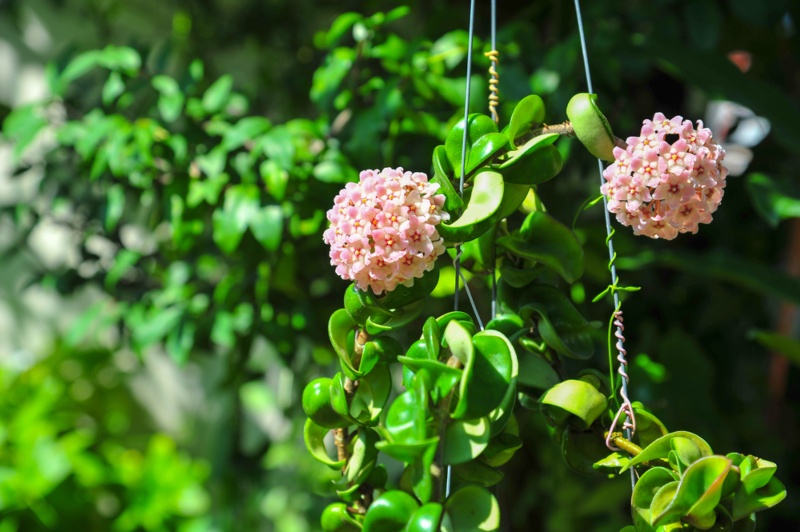
With their thick, glossy leaves, fragrant pink and white star-shaped flowers, and elegant trailing vines, Hoyas are gorgeous houseplants that have stolen the hearts of plant lovers for decades.
There are hundreds of varieties that are relatively easy to care for when given the appropriate growing conditions. However, many new Hoya growers find themselves disappointed when their Hoya doesn’t produce the exotic signature blooms or put out new leaves at the same rate their other plants do.
To avoid damaging your Hoya and to alleviate any potential frustration, let’s address a couple of reasons why your Hoya isn’t growing and some simple ways to get it back on track.
Why is My Hoya Not Producing Leaves?
There are several factors to consider when a seemingly healthy Hoya isn’t producing new leaves.
For starters, most species of Hoya prefer medium-to-bright light. Hoyas placed in low-light corners or rooms will end up with long sections of bare stems or a bunch of dead leaves. Expose the Hoya to more light by placing it in a west or east-facing window. They prefer between 2 to 4 hours of sunlight a day.
Of course, it is natural for Hoyas, and all houseplants, to lose a leaf here and there. However, if the Hoya begins to lose leaves abruptly, the plant is likely too cold. To remedy this, simply move the plant to a warmer environment with high humidity.
The way a Hoya is watered can also affect if and how leaves are produced. Water should be at room temperature to avoid stressing the plant and applied to the top half of the soil only when it is completely dry. It is also important to water a Hoya in the morning to allow the plant plenty of time to absorb its moisture.
Hoya plants are slow-growers. That being said, it is important to provide your plant with consistent light, water, and humidity to help it produce new leaves.
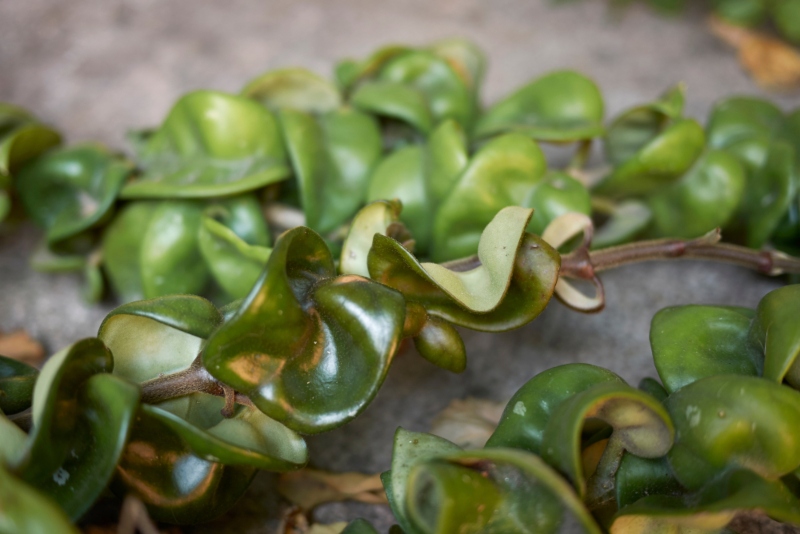
Why is My Hoya Not Producing Flowers?
It is important to note that it takes a minimum of 2-5 years for a Hoya plant to fully mature. Before this time, it is unlikely the plant will flower. But if you’ve had your Hoya for a while and it has yet to produce any flowers, there are a couple of reasons for this.
If your Hoya is fully mature and still not producing any flowers, the problem likely lies with the insufficient amount of light it’s getting. Make sure to keep the plant in medium-to-bright light, but avoid placing it in windows with unfiltered southern exposure, which can scorch the leaves over time and prohibit flowers from growing.
The appropriate fertilizer mix is also an important blooming factor. In the springtime, apply a soluble 5-10-5 fertilizer mix to introduce a high level of phosphorus which encourages the Hoya to flower.
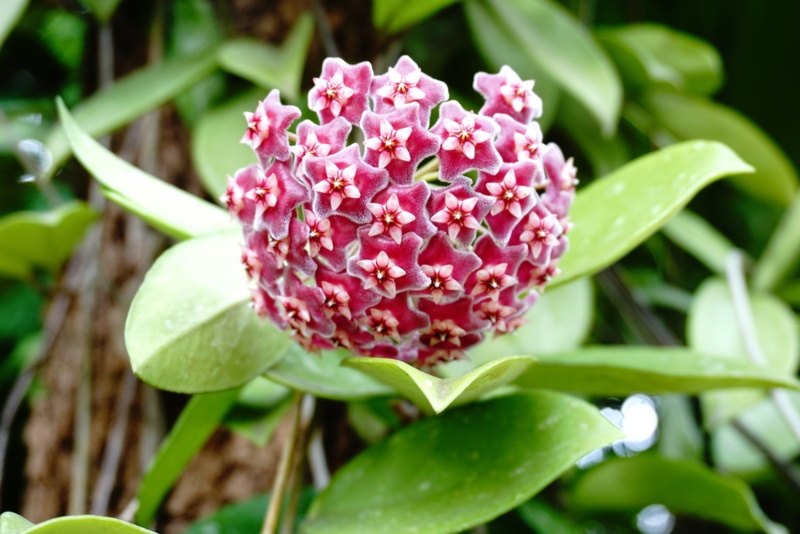
Some species of Hoya, like the Hoya carnosa, experience droughts in their natural environment for weeks at a time. To help your plant flower, try to limit water for up to a month to imitate blooming conditions in the wild.
The Hoya is a plant that likes to be root bound. Unlike most other houseplants, Hoyas grow best in pots where the roots are bound tightly in a tangled mass. A root-bound Hoya is likely to produce more blooms. Unless there is an instance of root rot from overwatering, it usually isn’t necessary to re-pot a Hoya.
If buds appear on your Hoya but fall off before blooming, it is possible that the potting soil was too wet or too dry for too long.
Hoyas that can be grown outside will likely bloom faster than Hoyas that are grown inside. If you can let your Hoya live on the patio for a few months, this may help kick start bloom growth.
Finally, different species of Hoyas have different bloom times. Some Hoyas bloom year-round while others only bloom seasonally, so it is best to do a little research to know what to expect from your specific variety.
With the Right Touch…
Getting a Hoya to bloom or produce new leaves can sometimes feel impossible. However, with a little patience and gentle persistence, they will prove themselves to be resilient houseplants that will eventually grow and bloom.





